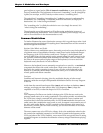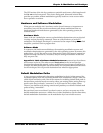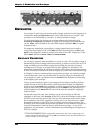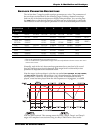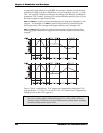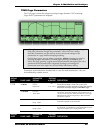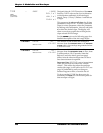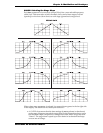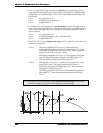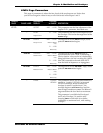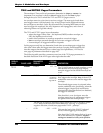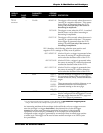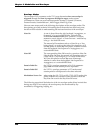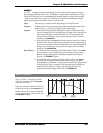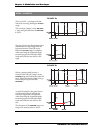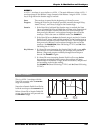
Chapter 6: Modulation and Envelopes
140 ANDROMEDA A6 REFERENCE MANUAL
• An EXP (exponential) slope, however, accelerates towards the target level: it
starts out slow then speeds up as it gets closer to its target level. Rather than a
straight line, it is represented by a curve. One of three exponential curves can
be selected:
EXP 1 less steep than EXP 2
EXP 2
standard exponential curve
EXP 3 steeper than EXP 2
• In contrast, the LOG (logarithmic) slope decelerates towards the target level: it
starts out fast then slows down as it reaches its target level. It is represented by
a curve that is the opposite of the exponent. One of three logarithmic curves
can be selected:
LOG 1 less steep than LOG 2
LOG 2
standard logarithmic curve, pictured above
LOG 3 steeper than LOG 2
• The SCURV (“S”-Curve) combines the slopes of EXP 2 and LOG 2. One of two S-
curves can be selected:
SCURV1 The rising-amplitude of S-Curve 1 is characterized by
acceleration during the first half of its stage using
EXP 2, then
decelerates during the last half using
LOG 2. This is commonly
known as a forward progression s-curve.
The falling-amplitude of S-Curve 1 is the opposite of its rising-
amp: the stage decelerates during the first half using
LOG 2,
then accelerates during the last half using
EXP 2.
SCURV2 The opposite of S-Curve 1 – commonly referred to as a reverse
progression s-curve – the rising-amplitude of S-Curve 2
decelerates during the first half using
LOG 2, then accelerates
during the last half using
EXP 2.
The falling-amplitude of S-Curve 2 accelerates during the first
half using
EXP 2, then decelerates during the last half using
LOG 2.
Tip: The Attack, Decay and Release stages can have different slopes. You can mix
and match slopes any way you want within the same envelope.



